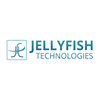Enterprise application modernization is a process that helps businesses stay in the fast-paced digital arena by updating the tech stack constantly and reducing technical debts. Application modernization is highly complicated and oftentimes dreaded by businesses because of induced downtime and digital transformation challenges. This causes businesses to neglect real-time technical advancements, resulting in increased technical debt and incompatibility in digital transformation in the future.
Many businesses in recent years have realized the power of application modernization, allowing them to stay abreast with the fast-paced technological evolution. However, the process is highly complicated and requires infallible skill sets and strategies to limit the inconsistencies.
This article discusses the potential challenges that businesses might face during enterprise application modernization and potential solutions.
Comprehensive Knowledge of Legacy Systems
Legacy systems are based on outdated technologies and complex monolithic architecture. This requires a skill set and deep understanding to assess the system and divide it into modular components. Additionally, the tech experts must have intensive resources and an in-depth understanding of adopting microservices and containerization to make the updated system more flexible and scalable.
Solution—Businesses should recruit tech experts with exceptional knowledge and previous experience in enterprise application modernization. This ensures that professionals know the right strategy to modernize without incurring potential data loss or business disruptions.
Data Migration Challenges
Enterprises may find it difficult to migrate data and integrate it during the modernization process. Data is present in a system throughout the various components in different formats. Migrating and integrating data during enterprise application modernization without data loss, incompatibility and system disruption are major challenges for enterprises.
Solution—Data profiling, cleansing, and validation are components of an effortless data migration strategy. Relying on data integration platforms that help businesses communicate between the updated and newer systems is the right approach to address data migration challenges.
Business Process Compatibility
Legacy applications are tightly integrated with business processes. This infers that any disruption in the existing tech stack may ripple out to affect business processes equally. In this case, enterprise application modernization may require careful workflow analysis and stakeholders’ inputs from the initial stages of modernization. Not addressing these requirements may create challenging situations where technical and business objectives are unsynchronized.
Solution— This compatibility issue requires inputs from stakeholders from the beginning to map out critical business processes that need modernization. The incremental approach is the best where modernization is gradual and ensures the disruptions are minimal. This approach emphasizes prioritizing critical business processes for legacy software modernization services.
Security and Compliance Issues
Surveys have shown that legacy software has more security vulnerabilities due to obsolete technologies. Legacy systems create a barrier to complying with the modern cyber security standards. This causes cyber threats to disrupt business processes and compromise sensitive user information.
Solution— Enterprise application modernization ensures that cyber security is integrated during software modernization. Evolved security measures, regular audits, and compliance updates are important to protect data from cyber breaches. Encryption and multiple-tiered authorization are best practices to secure the data of modern systems.
Budget Constraints
Software modernization services are cost-intensive, demanding huge investments. Businesses may opt for modernization services but the return on investment is still a doubtful topic. What if modernization doesn’t increase the business’ profits? These challenges force enterprises to endure technical debt and lose competitive opportunities due to the inability to integrate emerging technologies.
Solution— Running a cost-benefit analysis gives businesses a hint before opting for application modernization services. An effective strategy is to apply a phased technique where legacy system modernization services are not implemented all at once. This helps businesses monitor the ROI for modernization.
Cultural Resistance to Modernization
Businesses at times resist modernization even when they have realized the benefits of digital transformation and modernization. This can arise from personal beliefs or accustomedness to the existing software, that is simpler to operate. Application modernization needs consistent and intensive efforts which may seem overwhelming for employees, from frontline developers to senior managers.
Solution— Encouraging a culture of innovation and leveraging the latest technologies is an effective solution. Understanding that application modernization helps businesses with sustainable growth and offers resilience from pitfalls is vital for the modernization process.
Conclusion
Enterprise application modernization is an unfailing strategy to stay updated in the ever-changing digital landscape. This modernization helps businesses resolve technical debt, improve efficiency, enhance agility, automate processes, and incorporate technical evolution to meet competitive needs.
Tackling application modernization challenges can open new horizons for businesses to gain transformative benefits like improved customer services, effective business operations, increased productivity, technical affinity, and cross-team collaboration. Legacy system modernization services are imperative to leverage business potential and utilize emerging technologies for profit generation and over-the-top brand presence.

No comments yet